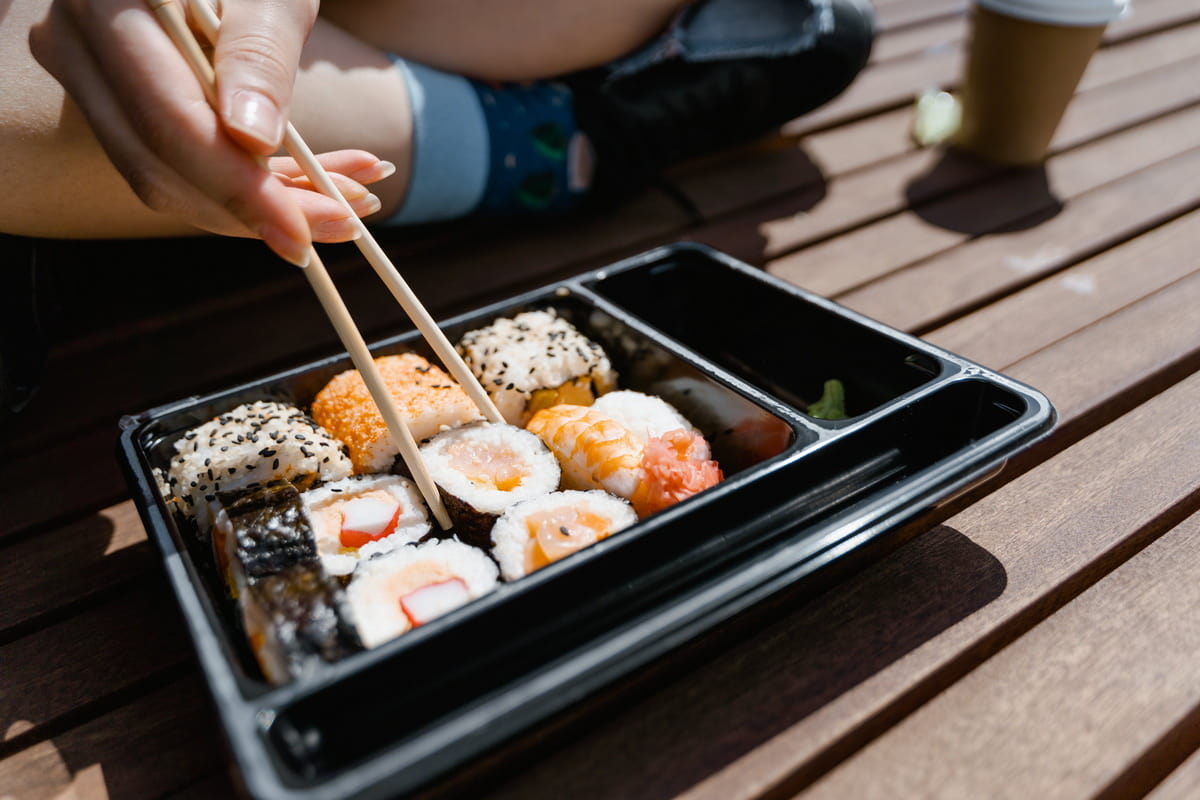Originating in Southeast Asia over a millennium ago, sushi began as a method to preserve fish in fermented rice. Evolving in Japan, where the first known sushi shop opened in 1824 in Edo (now Tokyo), this culinary art has become a global phenomenon. Combining vinegared rice with diverse ingredients, from raw fish to tropical fruits, sushi is celebrated for its unique blend of taste, artistry, and tradition.
As we explore sushi’s fascinating journey, its cultural significance, and the innovations that have propelled it onto the world stage, let’s dive into some fun facts about sushi.
1. The Surprising Origins of Sushi: From Fish Preservation to Delicacy
Originating in Southeast Asia as a method to preserve fish, sushi’s earliest form, narezushi, involved fermenting fish wrapped in sour rice. This method, dating back to the 2nd century BC, was not about taste but preservation.
By Japan’s Edo period (1603-1868), sushi evolved, with vinegar-added rice enhancing its flavor, transforming it into the delicacy we know today.
2. Narezushi: The Ancestor of Modern Sushi
Narezushi, the foundation of modern sushi, was a staple in Japan as early as the 8th century AD. Made by fermenting fish with salt and rice for months, it had a strong, pungent flavor.
This method was crucial for preserving fish before refrigeration, showcasing ancient Japan’s ingenuity in food preservation.

Image: history.co.uk
3. Sushi’s Journey to the West: How Sushi Conquered America
Sushi first appeared in the U.S. in the early 1900s, but it wasn’t until the post-WWII era that it gained popularity. The California roll, invented in the 1960s, played a key role in sushi’s American acceptance, replacing raw fish with avocado and crab, suiting local tastes.
This marked the beginning of sushi’s widespread popularity in the West.

Kawafuku, a sushi restaurant, was established in Los Angeles in the mid-1960s. Image: blowfishrestaurant.co.za
4. The Art of Sushi Rice: It’s More Than Just Rice
Sushi rice, or shari, is not just any rice. It’s a specially prepared short-grain Japonica rice, seasoned with a mix of vinegar, sugar, and salt. The first known written recipe for sushi rice appeared in the 1643 Japanese text, “Ryori Monogatari.”
Perfecting sushi rice is a revered skill among sushi chefs, essential for the balance and flavor of sushi.
5. Sashimi vs. Sushi: Understanding the Difference
Sashimi and sushi are often confused, but they are distinctly different. Sashimi, dating back to the Muromachi period (1336-1573), is purely slices of raw fish or seafood, without rice. Sushi, originating earlier, always includes vinegared rice, combined with various ingredients like fish, vegetables, and seaweed.
The key difference lies in the presence of rice in sushi, contrasting with the simplicity of sashimi.
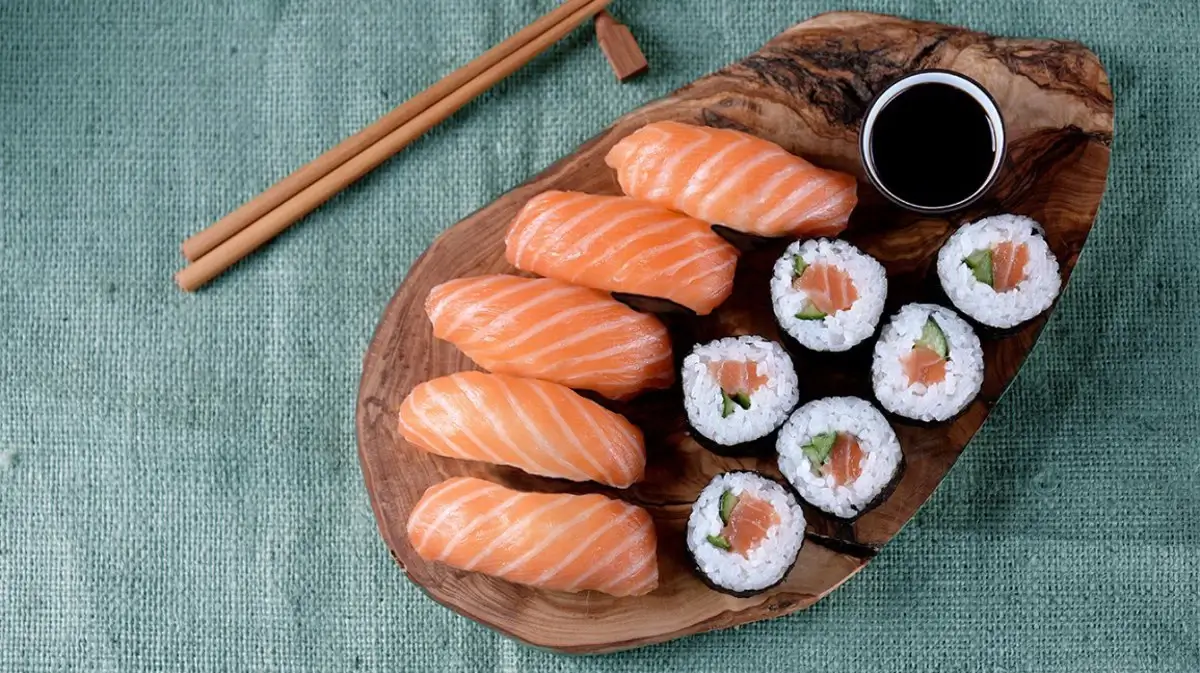
Image: bestrestaurants.com.au
6. Wasabi: More Than Just a Spicy Condiment
Wasabi, synonymous with sushi, has a history that extends beyond its fiery kick. Originating in Japan, true wasabi is a rare, expensive plant, first cultivated in the 10th century. It’s known for its antibacterial properties and flavor that enhances fish without overpowering it.
Most wasabi served outside Japan is a mixture of horseradish, mustard, and green dye, offering a different experience than authentic wasabi.
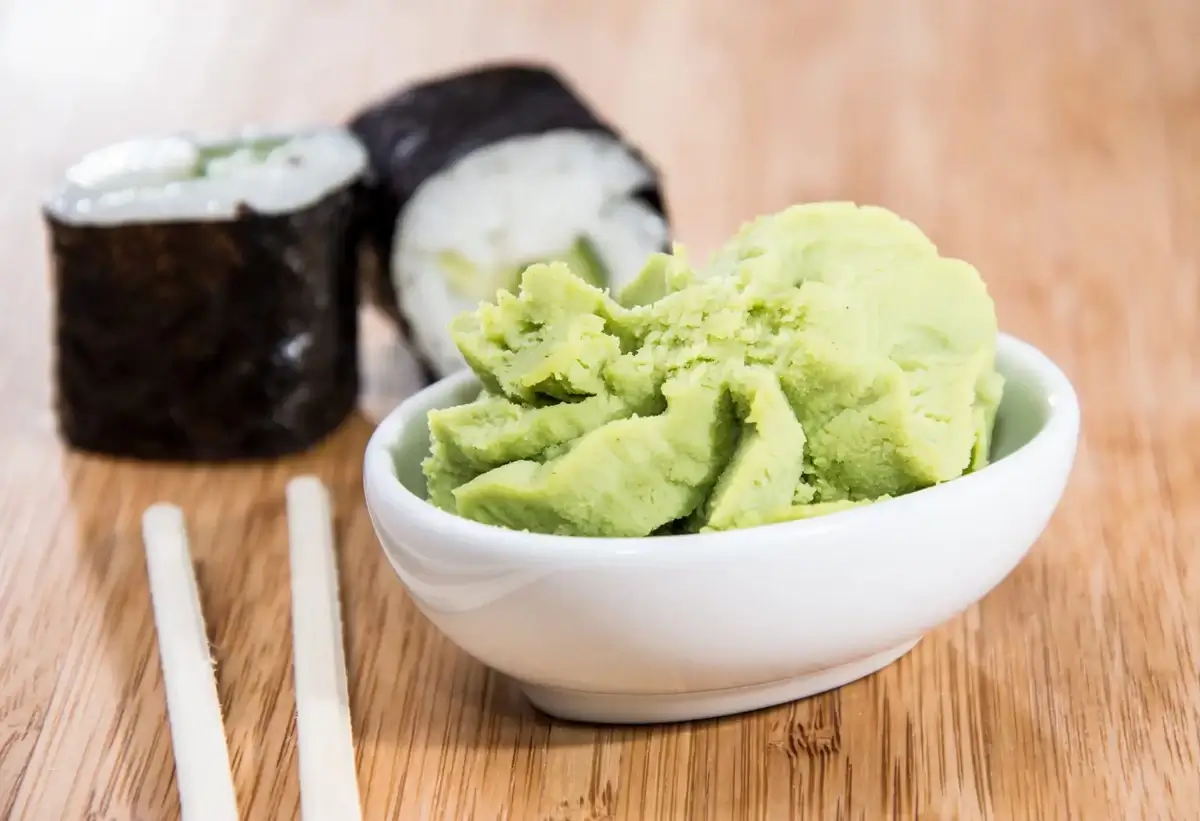
Image: akamaized.net
7. The Role of Nori: The Seaweed that Wraps Sushi
Nori, the seaweed used in sushi, has its own rich history. Initially, nori was scraped from dock pilings in Japan and formed into sheets in the early Edo period. Today, it’s cultivated and processed, playing a crucial role in sushi’s flavor and structure, particularly in rolls.
Nori not only adds a distinct taste and texture but also provides essential nutrients, making it a healthful component of sushi.
8. Sushi Etiquette: Do’s and Don’ts
Sushi etiquette, deeply rooted in Japanese culture, enhances the dining experience. Key rules include not over-soaking sushi in soy sauce, eating nigiri sushi in one bite, and placing ginger on the plate, not on the sushi.
These practices, developed over centuries, reflect respect for the chef’s skill and the ingredients’ flavors.
9. Soy Sauce: A Sushi Staple with a Rich History
Soy sauce, an essential sushi accompaniment, dates back to 7th century China, spreading to Japan in the 12th century. Its use with sushi enhances the flavors and complements the fish’s taste.
Traditionally brewed soy sauce involves a fermentation process using soybeans, wheat, and a mold called koji, resulting in a complex, umami-rich flavor.

Traditional soy sauce brewing. Image: my-kagawa.jp
10. The Evolution of Sushi: From Edo-Period to Modern Varieties
Sushi has evolved significantly since the Edo period (1603-1868), when nigiri sushi, small balls of rice topped with fish, first emerged. This period saw the introduction of fresh fish in sushi, a departure from the fermented styles.
In the 20th century, sushi’s evolution continued, giving rise to diverse forms like maki (rolls), temaki (hand rolls), and modern inventions like the California roll. This evolution reflects not just changes in taste but also in technology and global influence on Japanese culinary traditions.
11. Sushi Robots: The Future of Sushi Making?
The advent of sushi robots, capable of producing sushi at a rapid pace, presents a modern twist in sushi making. Introduced in the late 20th century, these machines can mold rice, dispense wasabi, and even roll sushi, streamlining the sushi-making process.
While they offer efficiency and consistency, especially in high-demand settings, there’s an ongoing debate about their impact on the traditional art and skill of sushi craftsmanship.
12. Famous Sushi Chefs and Their Impact on Sushi Culture
Renowned sushi chefs like Jiro Ono and Masaharu Morimoto have significantly influenced global sushi culture. These masters, known for their precision, skill, and dedication, have elevated sushi making to an art form, gaining worldwide recognition.
Their innovative techniques and commitment to quality have not only popularized sushi globally but also set high standards for sushi chefs everywhere.
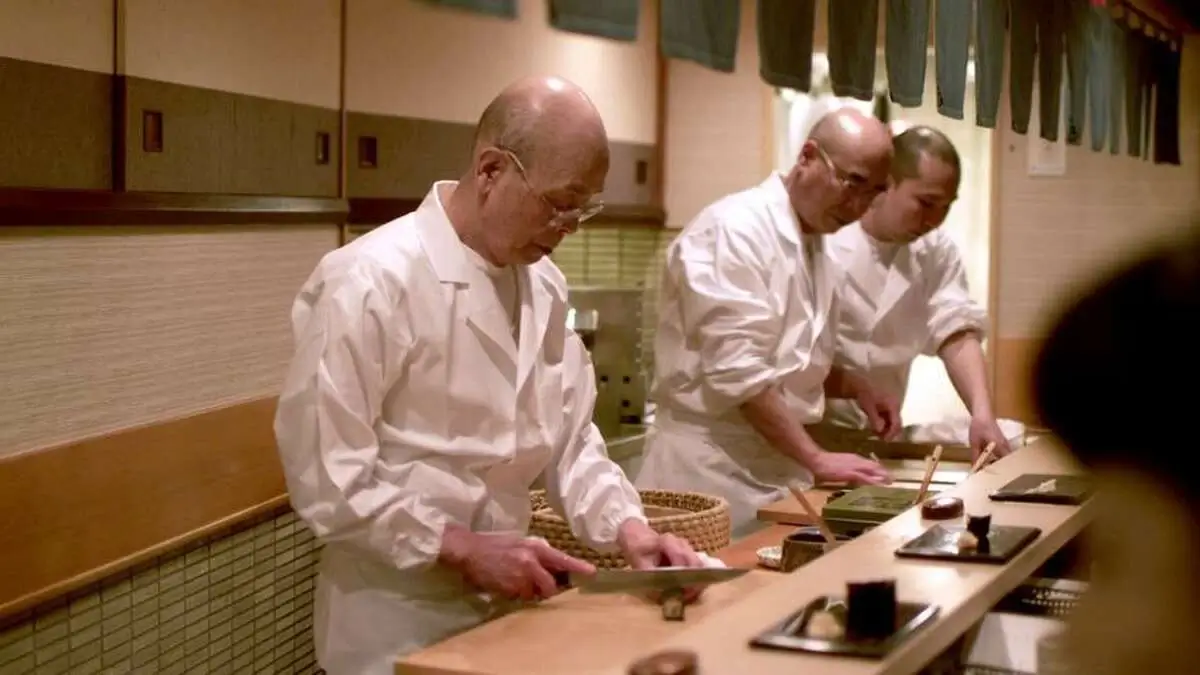
Sushi chef Jiro Ono. Image: nhregister.com
13. Sushi and Health: Nutritional Benefits and Risks
Sushi offers various health benefits, being rich in omega-3 fatty acids, proteins, and vitamins from its fish and vegetable components. However, concerns include the risk of mercury in certain fish and the high sodium content in soy sauce and pickled ingredients. Additionally, the raw nature of sushi raises concerns about foodborne illnesses.
Moderation and informed choices are key to enjoying sushi’s health benefits while minimizing risks.
14. The Global Sushi Industry: A Billion-Dollar Business
The sushi industry has become a global economic force, with the market size reaching billions of dollars. Its growth is driven by the increasing popularity of sushi outside Japan, innovations in sushi preparation and distribution, and the rise of sushi restaurants worldwide.
This expansion reflects not only sushi’s culinary appeal but also its adaptability to various cultures and tastes.
15. Conveyor Belt Sushi: A Revolution in Sushi Dining
Conveyor belt sushi, also known as kaiten-zushi, revolutionized sushi dining when it debuted in Japan in 1958. Invented by Yoshiaki Shiraishi, this system made sushi more accessible and affordable by delivering plates of sushi to diners via a rotating belt.
It’s a perfect blend of efficiency and entertainment, allowing customers to choose from a variety of sushi as it passes by their seats. This innovation not only democratized sushi in Japan but also influenced its global perception as a fun and casual dining option.
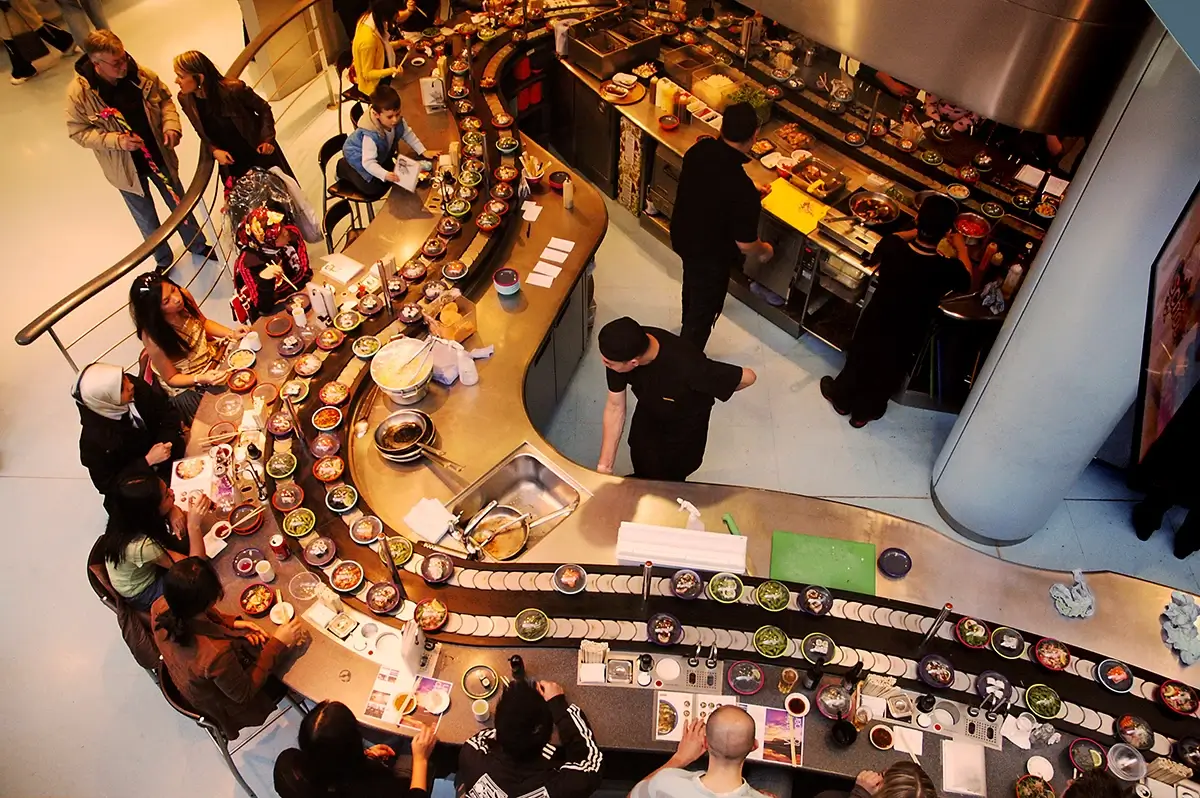
Image: bostonmagazine.com
16. The Significance of Sushi in Japanese Culture
Sushi is deeply ingrained in Japanese culture, symbolizing more than just food. It represents a culinary art form that embodies Japanese aesthetics, precision, and respect for ingredients.
Sushi’s preparation and presentation are considered reflections of the chef’s skill and dedication. Additionally, sushi plays a role in special occasions and festivals, highlighting its cultural significance beyond everyday dining.
17. Sushi in Pop Culture: Movies, Books, and Beyond
Sushi’s influence extends into pop culture, with appearances in movies, books, and television shows. This exposure has played a pivotal role in its global popularity. Films like “Jiro Dreams of Sushi” showcase the dedication behind sushi making, while books and TV shows often portray sushi as a symbol of sophisticated, cosmopolitan dining.
These representations contribute to the mystique and allure of sushi, making it more than just a meal.
18. Unusual Sushi Ingredients: Beyond Fish and Rice
While traditional sushi focuses on fish and rice, modern sushi chefs have been experimenting with unusual ingredients to cater to diverse palates.
Ingredients like tropical fruits, foie gras, and even chocolate have found their way into sushi rolls, breaking the conventional boundaries. These innovations reflect sushi’s adaptability and the ongoing evolution of this culinary art.

Image: veggieworld.eco
19. The Rising Popularity of Vegetarian and Vegan Sushi
Vegetarian and vegan sushi are gaining popularity as dietary preferences shift globally. Ingredients like avocado, cucumber, bell peppers, and fermented soybeans are being used to create sushi that caters to plant-based diets.
This trend is not only widening sushi’s appeal but also showcasing its versatility in accommodating different dietary needs and preferences.
20. Sushi Records: The Largest, Longest, and Most Expensive
Sushi has set some impressive world records. The longest sushi roll ever made stretched for 2.5 kilometers (1.55 miles) in Japan in 2016. On the luxury end, the most expensive sushi is adorned with gold and diamonds, costing thousands per piece.
These records highlight sushi’s versatility, from community events to exclusive culinary experiences, showcasing its broad appeal and capacity for creativity.

Image: x.com
21. Sushi Grade Fish: What Makes It Special?
“Sushi grade” fish is a term used to denote the highest quality fish, safe for raw consumption. This classification involves rigorous standards of freshness and handling, including being frozen at specific temperatures to kill parasites.
The texture, flavor, and color of the fish are also critical factors. This grade ensures that the sushi experience is not only delicious but also safe.
22. Sushi and Sustainability: Environmental Concerns
The popularity of sushi has raised concerns about the sustainability of fish populations and ocean health. Overfishing and unsustainable fishing practices for popular sushi ingredients like bluefin tuna and eel pose significant environmental challenges.
There’s a growing movement towards sustainable sushi, which involves using responsibly sourced fish and alternative ingredients to reduce ecological impact.

Image: thecommonwealth.org
23. The Psychology of Sushi: Why We Crave It
The craving for sushi involves a complex interplay of sensory experiences and cultural influences. The combination of umami-rich fish, tangy rice, and visually appealing presentation stimulates multiple senses, enhancing the overall dining experience.
Additionally, the social aspect of sushi – often shared and enjoyed in groups – adds to its appeal. Psychological research indicates that the anticipation and ritual surrounding sushi consumption contribute significantly to its desirability, making it more than just a meal, but a holistic experience.
24. Sushi Training: The Journey to Become a Sushi Chef
Becoming a sushi chef is a rigorous and disciplined journey, often requiring years of training. Aspiring chefs, or itamae, start by learning basic tasks like rice washing and progress to more complex skills like fish slicing and sushi shaping.
Mastery of sushi involves not only technical skill but also an understanding of the cultural and historical context of Japanese cuisine. The path to becoming a sushi master reflects dedication, respect for tradition, and continuous learning.
25. Sushi Around the World: Unique Regional Takes
Sushi’s global popularity has led to a variety of regional adaptations. In Brazil, sushi is often combined with tropical fruits and cream cheese, reflecting local tastes. In the U.S., inventive rolls with multiple fillings and toppings, like the Philadelphia roll with smoked salmon and cream cheese, are popular. Scandinavian countries have introduced versions with local fish like herring.
These regional variations demonstrate sushi’s versatility and its ability to merge with different culinary traditions, creating a truly global cuisine.

Image: wallpapers.com
FAQ
What is Unique About Sushi?
Sushi is unique due to its combination of simplicity and complexity. It merges minimalistic ingredients, primarily vinegared rice and raw fish, with intricate preparation techniques. The balance of flavors and textures, alongside its visually appealing presentation, sets it apart from other cuisines. Additionally, sushi reflects a deep cultural significance, embodying the principles of Japanese aesthetics and respect for ingredients.
Why is it Called Sushi?
The term “sushi” derives from an archaic grammatical form of the Japanese word “sour” or “sour-tasting,” related to its traditional method of preparation. Originally, sushi involved fermenting fish with salt and rice, where the rice was used to ferment the fish and discarded before consumption. The term has persisted even though the preparation style has evolved, now referring to the vinegared rice combined with various ingredients.
Who First Ate Sushi?
The first consumption of sushi can be traced back to Southeast Asia. The practice of fermenting fish with rice was likely started by rice farmers as a means of preserving fish for later consumption. This method then spread to China and eventually to Japan, where it evolved into the form of sushi that we recognize today.
What Does the Sushi Symbolize?
Sushi symbolizes a blend of tradition, innovation, and artistry. In Japanese culture, it represents more than just food; it’s an expression of respect for nature and the seasons, precision in preparation, and a connection to centuries-old culinary traditions. Sushi also symbolizes the harmony of flavors and the importance of aesthetic presentation in Japanese cuisine.
What Made Sushi Famous?
Sushi gained fame due to its unique taste, artistic presentation, and its evolution from a traditional Japanese dish to a modern culinary delight. The introduction of sushi to Western countries, particularly the United States, and adaptations like the California roll helped skyrocket its popularity. Additionally, its portrayal in media and pop culture has contributed to its global recognition.
Why is Sushi So Expensive?
Sushi can be expensive due to several factors: the quality and rarity of the ingredients, especially high-grade fish like bluefin tuna; the skill and labor involved in its preparation; and the overall dining experience offered by sushi restaurants. The cost also reflects the meticulousness in sourcing and handling sushi-grade fish, ensuring freshness and safety for raw consumption.
What is the Most Famous Type of Sushi?
The most famous type of sushi is arguably nigiri sushi. It consists of an oblong mound of vinegared rice topped with a slice of raw fish. Nigiri sushi is widely appreciated for its simplicity and ability to showcase the quality of the fish. It is a staple in sushi restaurants around the world and is often considered the quintessence of traditional Japanese sushi.


